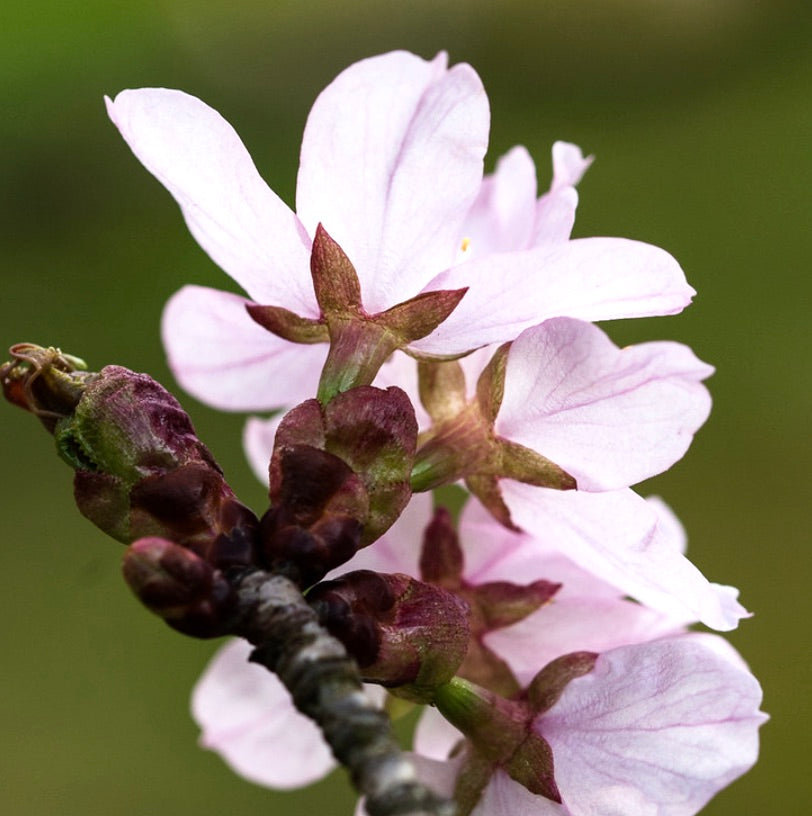- Catalogo Piante
Prunus sargentii | Ciliegio di Sargent | Ciliegio delle colline del Nord del Giappone
Prunus sargentii | Ciliegio di Sargent | Ciliegio delle colline del Nord del Giappone
Impossibile caricare la disponibilità di ritiro
Descrizione della pianta
Prunus sargentii, comunemente chiamato Ciliegio di Sargent, è un affascinante ciliegio ornamentale originario dell’Asia orientale. Questo splendido albero di ciliegio prospera in climi temperati ed è apprezzato per i suoi vivaci fiori rosa che appaiono all’inizio della primavera. Le persone amano il ciliegio Prunus sargentii per la sua chioma densa e la corteccia liscia, che aggiungono texture e colore a giardini e parchi. La sua origine naturale include la Corea, rendendolo una specie preziosa tra gli appassionati di ciliegi.
Il ciliegio Prunus sargentii offre una spettacolare fioritura seguita da piccoli frutti brillanti. I giardinieri apprezzano questo albero per la sua crescita robusta e la resistenza ai parassiti. Le sue foglie emergono di colore bronzo e maturano in un verde intenso, offrendo interesse stagionale. Conosciuto come il ciliegio coreano, si distingue tra gli altri ciliegi ornamentali per la sua robustezza e la forma elegante.
- Produce fiori rosa vivaci all’inizio della primavera
- Presenta corteccia liscia di colore marrone-rossastro
- Ha foglie larghe e ovate che diventano gialle in autunno
- Cresce con una chioma densa e tondeggiante
- Proviene dalla Corea e da altre regioni dell’Asia orientale
Il Ciliegio di Sargent è un’aggiunta preziosa ai paesaggi che desiderano colore e texture stagionali. Questo ciliegio originario della Corea unisce bellezza ornamentale e interesse botanico. La sua forma ben definita e la fioritura colorata ne fanno un favorito tra gli amanti dei ciliegi. Che venga piantato come esemplare singolo o in gruppi, il Prunus sargentii dona fascino ed eleganza tutto l’anno.
IMPORTANTE: Le immagini mostrano la pianta madre, che non è in vendita. L’offerta include una pianta delle dimensioni indicate nella descrizione.
Famiglia botanica: Rosaceae
Genere botanico: Prunus
Specie botanica: Prunus sargentii
SKU:WP-2633-S
Coltivazione
Coltivazione
Informazioni e Avvertenze
Informazioni e Avvertenze
Altezza della pianta:
Diametro della pianta:
Dimensioni del vaso:
Innesto/Non innestato: Not Grafted
Avvertenza: Si prega di notare che la maggior parte delle piante cambia con le stagioni. Se è presente il fogliame, potrebbe essere caduto o aver cambiato colore.
Condividi


